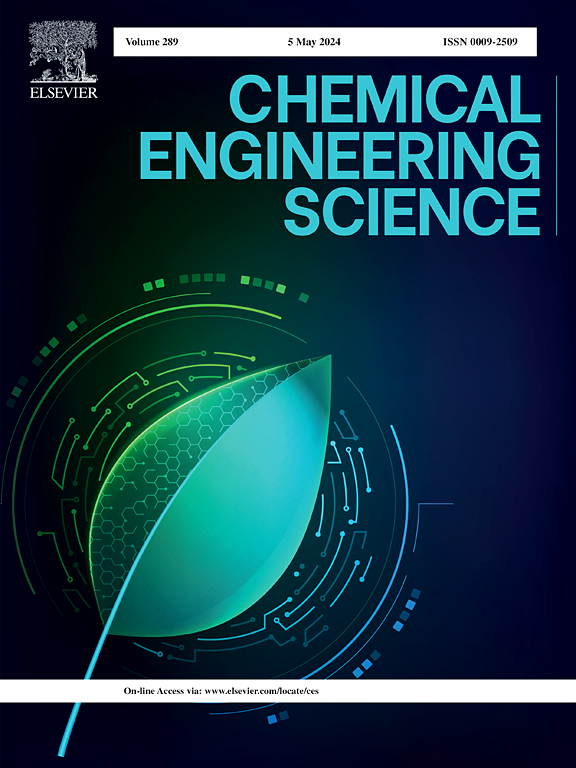使用花生壳基吸附剂可持续去除镉和铜离子:固定床柱性能和现象学见解
IF 4.3
2区 工程技术
Q2 ENGINEERING, CHEMICAL
引用次数: 0
摘要
含有镉(Cd2+)和铜(Cu2+)离子的工业废水的排放对人类健康和环境构成重大风险,必须在排放到水体之前清除这些污染物。采用固定床柱研究了单组分和双组分体系对碳化花生壳(BPS)上Cd2+和Cu2+离子的吸附。分析了体积流量(QfQf)、初始浓度(C0C0)、床层高度(L)和再生周期等关键参数。结果表明:吸附量(q, mmol·g−1)随QfQf (Cd2+: 0.085 ~ 0.182; Cu2+: 0.130 ~ 0.258)和C0C0 (Cd2+: 0.075 ~ 0.289; Cu2+: 0.125 ~ 0.306)的增大而增大,随L的增大而减小(Cd2+: 0.325 ~ 0.129; Cu2+: 0.357 ~ 0.170)。实验数据与Thomas和Yoon-Nelson模型以及一个现象学模型吻合得很好。BPS在四个吸附/解吸循环中表现出一致的效率(Cd2+: 0.132-0.095; Cu2+: 0.177-0.146)。综上所述,本研究增强了对吸附过程的理解,并证明了BPS在固定床系统中去除Cd2+和Cu2+离子的技术可行性。这些发现为该领域的进一步应用和研究提供了基础,例如污水处理厂的规模扩大,利用农业系统开发混合吸附系统,在渗透性反应屏障中的应用,金属回收,促进环境可持续性。本文章由计算机程序翻译,如有差异,请以英文原文为准。


Sustainable removal of cadmium and copper ions using peanut shell-based adsorbent: fixed-bed column performance and phenomenologic insights
The discharge of industrial effluents containing cadmium (Cd2+) and copper (Cu2+) ions poses significant risks to human health and the environment, necessitating the removal of these contaminants before disposal into water bodies. This study aimed to evaluate the adsorption of Cd2+ and Cu2+ ions onto carbonized peanut shells (BPS) in mono and bicomponent systems using a fixed-bed column. Key parameters, including volumetric flow rate (), initial concentration (), bed height (L), and regeneration cycles, were analyzed. The results showed that adsorption capacity (q, mmol·g−1) increased with higher (Cd2+: 0.085–0.182; Cu2+: 0.130–0.258) and (Cd2+: 0.075–0.289; Cu2+: 0.125–0.306), while it decreased with increasing L (Cd2+: 0.325–0.129; Cu2+: 0.357–0.170). The experimental data aligned well with the Thomas and Yoon-Nelson models, as well as a phenomenological model. BPS demonstrated consistent efficiency across four adsorption/desorption cycles (Cd2+: 0.132–0.095; Cu2+: 0.177–0.146). In conclusion, this study enhanced the understanding of the adsorption process and demonstrated the technical viability of BPS for removing Cd2+ and Cu2+ ions in fixed-bed systems. These findings provide a foundation for further applications and research in this area, such as scale-up for wastewater treatment plants, development of hybrid adsorption systems using agricultural systems, application in permeable reactive barriers, metal recovery, promoting environmental sustainability.
求助全文
通过发布文献求助,成功后即可免费获取论文全文。
去求助
来源期刊

Chemical Engineering Science
工程技术-工程:化工
CiteScore
7.50
自引率
8.50%
发文量
1025
审稿时长
50 days
期刊介绍:
Chemical engineering enables the transformation of natural resources and energy into useful products for society. It draws on and applies natural sciences, mathematics and economics, and has developed fundamental engineering science that underpins the discipline.
Chemical Engineering Science (CES) has been publishing papers on the fundamentals of chemical engineering since 1951. CES is the platform where the most significant advances in the discipline have ever since been published. Chemical Engineering Science has accompanied and sustained chemical engineering through its development into the vibrant and broad scientific discipline it is today.
 求助内容:
求助内容: 应助结果提醒方式:
应助结果提醒方式:


